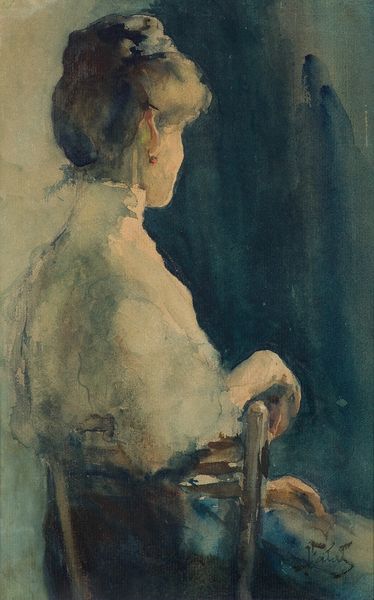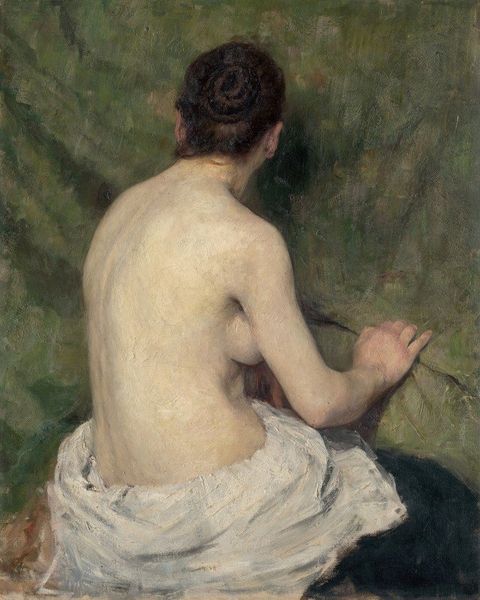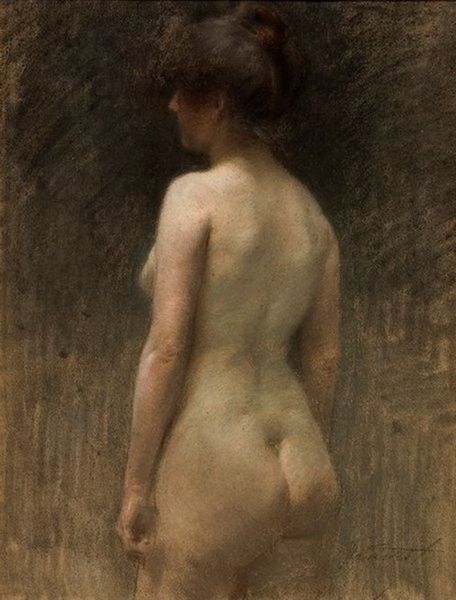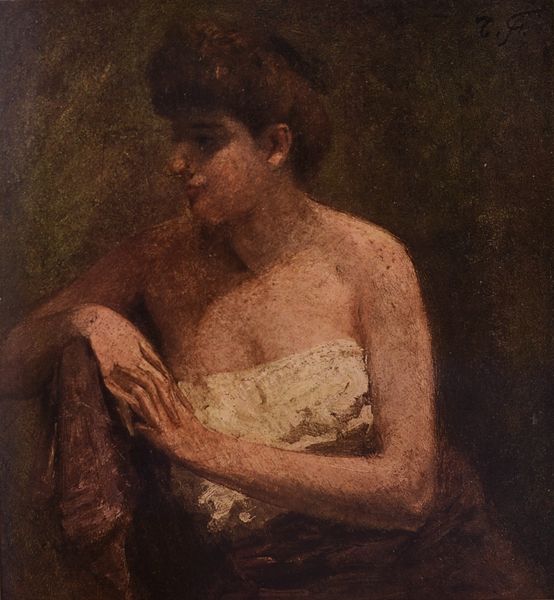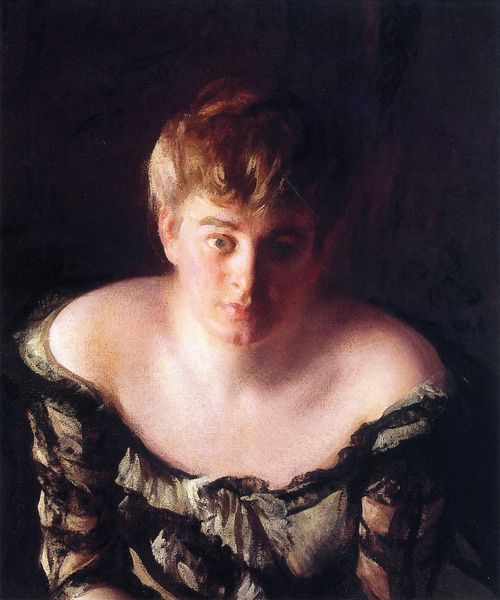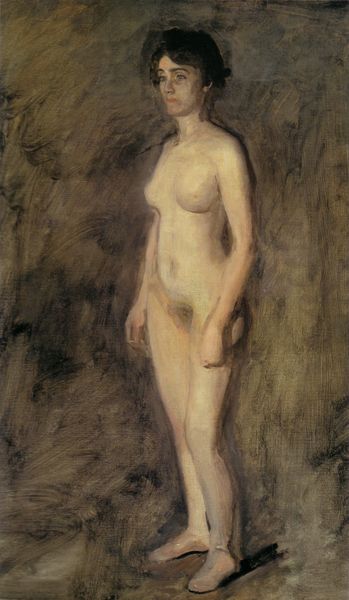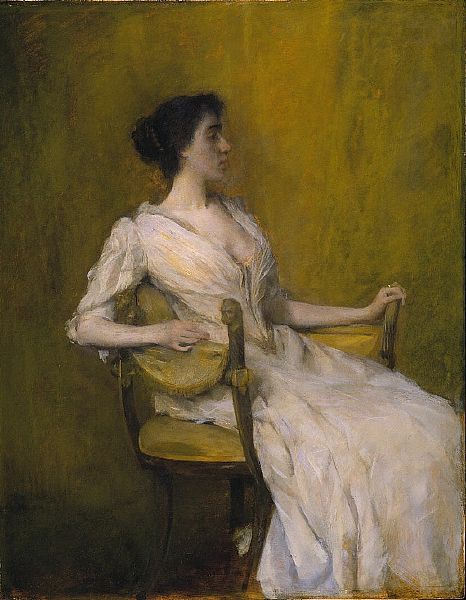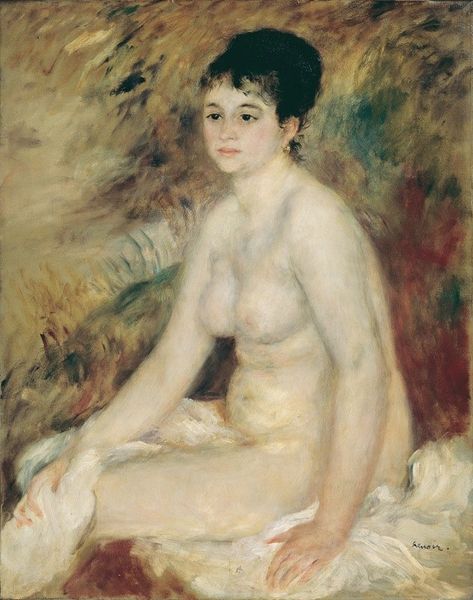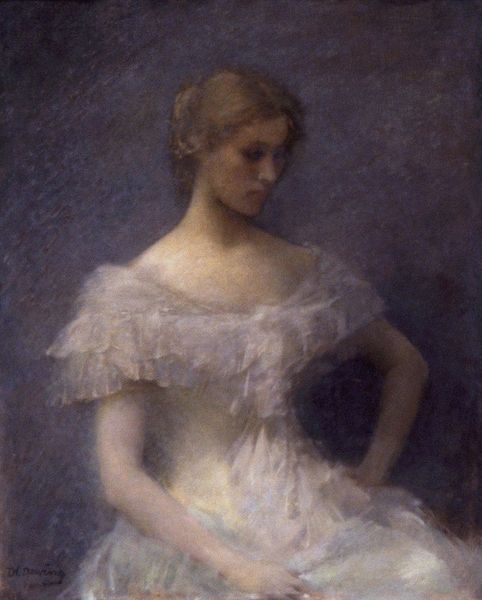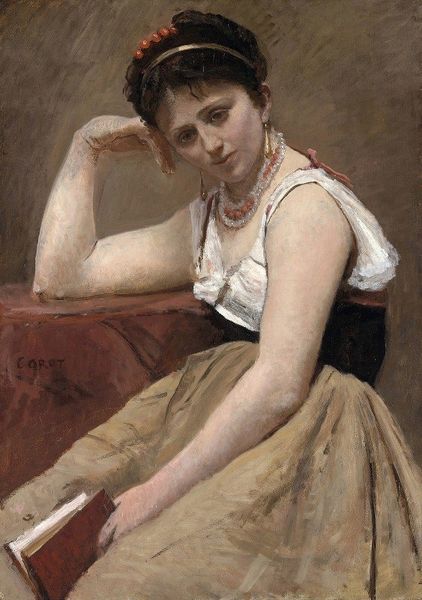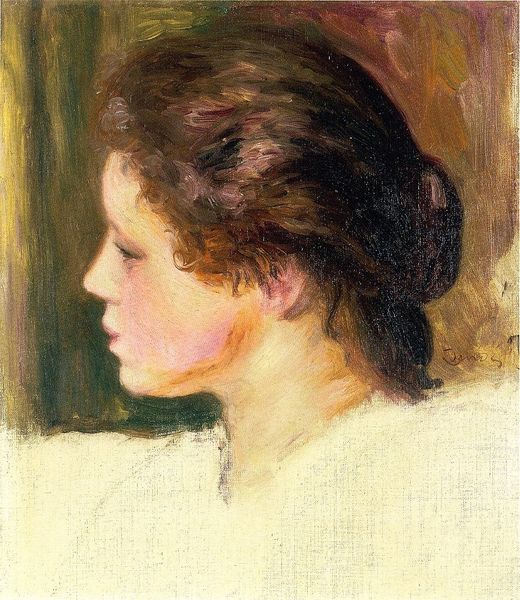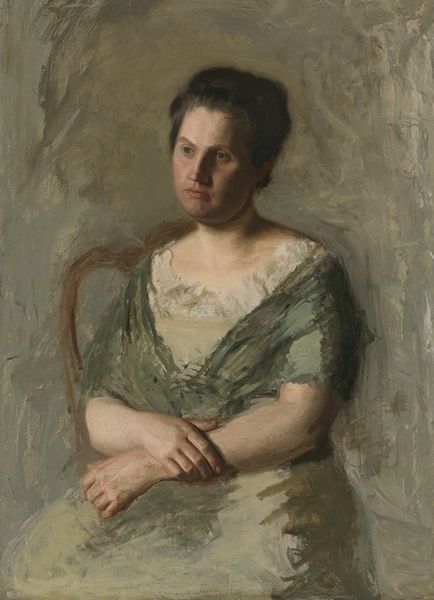
Copyright: Public domain
Editor: So, here we have Anton Ažbe’s "Half Nude" from 1888, an oil painting with a fascinating Romantic style. There's an air of wistful quietude about the sitter; what strikes me is the soft focus and the stark profile against a blended grey-blue background. How do you interpret the imagery at play in this piece? Curator: It's evocative, isn’t it? What’s most resonant is the gaze averted; the face is in profile, yet averted as if unwilling to meet the viewer’s gaze. This isn't merely a nude, it's a study in introspection. I see layers of classical allegory intertwined with the burgeoning sense of Romantic individualism, wouldn't you agree? Look closely at the interplay between the soft flesh tones and the enveloping darkness. Ažbe uses light not just to illuminate, but to almost veil the figure. Editor: I see what you mean! So the shading isn't just aesthetic. Could you expand a bit on that veiling? Curator: Well, consider the era. 1888 – Europe stood at a fascinating intersection, and the cultural memory of classical idealism stood juxtaposed against rising modern anxieties. So a visual trope like averted gaze here takes on layers of complex meaning: innocence, vulnerability, uncertainty. Think about it: is it an avoidance of judgement or longing? What memories do such symbols stir? Editor: So much to think about! This gives the artwork such emotional depth. I came looking for brushstrokes, but you’ve revealed an entire story. Curator: Exactly! The power of art often resides not just in what's visible, but what is implied, isn't that fascinating?
Comments
No comments
Be the first to comment and join the conversation on the ultimate creative platform.
